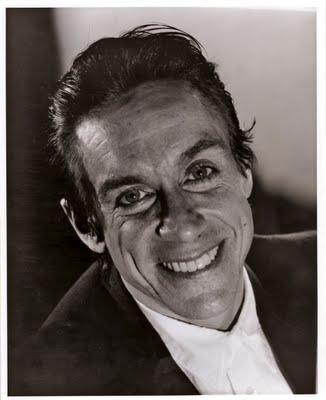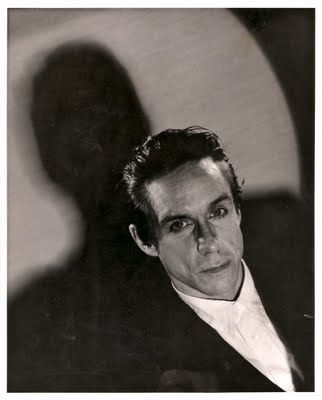Quite a few years ago I was sharing my studio with another photographer. One day I walked into the studio to get a piece of lighting equipment and I found the photographer there. He asked me, “In a few minutes I have to photograph a woman called Carole Taylor (she was then a city Councillor) for the cover of Vancouver Magazine. Who is she?”
My friend and previous fellow collaborator Les Wiseman (he was the writer) for many a story for Vancouver Magazine and TV Guide told me that one of the secrets of good magazine writing is to research your subject. It would seem to me that this intelligent piece of advice also applies to photographers who shoot for magazines.
This advice has served me well. Researching my subjects has always enabled me to connect with the person facing my camera. Since many of these persons when shooting for magazines are some sort of celebrity or politician they usually don’t give you much time. You are forced to find a common ground of interest quickly if you hope to get a picture that will be different from all others. When I faced actress Helena Bonham Carter I knew her grandmother was Spanish. I had found this out through research. I had a suspicion Bonham Carter spoke Spanish. Taking her photograph, while in the presence of an intrusive writer who had brought his baby to the interview, I was able to bond with her when I spoke to her in Spanish. In fact Bonham Carter wrote me a letter in perfect grammatical Spanish thanking me for the fun she had.
 With the slow demise of many magazines many of the procedures that once were in effect have faded. At one time writers and photographers worked in tandem. Wiseman and I went to many rock concerts together and interviewed musicians back stage or in their hotels. Wiseman sometimes advised me as to what his tack was going to be in the interview. I would tell him what my possible approach to the photograph would be. But what worked best was Wiseman’s insistence that I remain in the room during the interview. It was here that I got many of my ideas for that photographic approach. This policy of allowing me to remain during the interview was also a technique shared with writers John Lekich and Christopher Dafoe. Both of them worked for the Globe & Mail. The former wrote as freelance art reporter and the latter was the arts correspondent in Vancouver.
With the slow demise of many magazines many of the procedures that once were in effect have faded. At one time writers and photographers worked in tandem. Wiseman and I went to many rock concerts together and interviewed musicians back stage or in their hotels. Wiseman sometimes advised me as to what his tack was going to be in the interview. I would tell him what my possible approach to the photograph would be. But what worked best was Wiseman’s insistence that I remain in the room during the interview. It was here that I got many of my ideas for that photographic approach. This policy of allowing me to remain during the interview was also a technique shared with writers John Lekich and Christopher Dafoe. Both of them worked for the Globe & Mail. The former wrote as freelance art reporter and the latter was the arts correspondent in Vancouver.
 I have shot many magazine, tabloid and newspaper covers since 1975. I noticed something peculiar about some of my better covers. This is that sometimes they can only be used once, and only once. After that someone might ask,"So why that composite picture of Iggy Pop smiling?"
About 20 years ago I used to frequent the monthly meetings of an organization called CAPIC (Canadian Association of Photographers and Illustrators In Communication). The talk then was about selling stock. One of our members a persnickety South African born Paul Little (he worked as a stringer for Macleans) would tell us from the back row, “If you do stock nobody will ever pay you to travel to Paris to take pictures.” He was usually hushed. But time has proven him correct and few photographers are now paid to go to exotic locations to take pictures.
As I look at my extensive collection of photographs, slides and negatives (b+w and colour) I realize that I have never ever been able to sell stock. The reason is that my pictures are too specific to a particular article. They are not stock pictures of people in general. They are pictures of particular people who cannot play the role of everyman or everywoman for an ad. This means that my pictures have value in other directions but not immediately as stock.
As an example look at the composite picture of Iggy Pop here where he is smiling in the right hand corner. When it became time to pick a picture for the article/interview that Les Wiseman made in May 1987 I was promoting the use of the picture showing Iggy Pop’s hands. I had mentioned to Iggy Pop (it was Wiseman who had said in the presence of the man’s handler, “What are we supposed to call him, Mr. Pop? “) that his demeanor and look resembled the famous photograph taken of Joseph Goebbels by Alfred Eisenstaedt in 1933. Iggy Pop got all excited and told me, “I was in Geneva, not too long ago in the very spot where that picture was taken.” He then struck the pose for me. But Wiseman insisted that Iggy Pop had been transformed and that he was now clean of drugs and alcohol and that the most salient feature of the new man was his smile. And that is how I came to print the composite to please Wiseman.
I have shot many magazine, tabloid and newspaper covers since 1975. I noticed something peculiar about some of my better covers. This is that sometimes they can only be used once, and only once. After that someone might ask,"So why that composite picture of Iggy Pop smiling?"
About 20 years ago I used to frequent the monthly meetings of an organization called CAPIC (Canadian Association of Photographers and Illustrators In Communication). The talk then was about selling stock. One of our members a persnickety South African born Paul Little (he worked as a stringer for Macleans) would tell us from the back row, “If you do stock nobody will ever pay you to travel to Paris to take pictures.” He was usually hushed. But time has proven him correct and few photographers are now paid to go to exotic locations to take pictures.
As I look at my extensive collection of photographs, slides and negatives (b+w and colour) I realize that I have never ever been able to sell stock. The reason is that my pictures are too specific to a particular article. They are not stock pictures of people in general. They are pictures of particular people who cannot play the role of everyman or everywoman for an ad. This means that my pictures have value in other directions but not immediately as stock.
As an example look at the composite picture of Iggy Pop here where he is smiling in the right hand corner. When it became time to pick a picture for the article/interview that Les Wiseman made in May 1987 I was promoting the use of the picture showing Iggy Pop’s hands. I had mentioned to Iggy Pop (it was Wiseman who had said in the presence of the man’s handler, “What are we supposed to call him, Mr. Pop? “) that his demeanor and look resembled the famous photograph taken of Joseph Goebbels by Alfred Eisenstaedt in 1933. Iggy Pop got all excited and told me, “I was in Geneva, not too long ago in the very spot where that picture was taken.” He then struck the pose for me. But Wiseman insisted that Iggy Pop had been transformed and that he was now clean of drugs and alcohol and that the most salient feature of the new man was his smile. And that is how I came to print the composite to please Wiseman.
 An editorial collaboration involves give and take. That is part of the tension but also part of the fun. This blog is a de facto magazine of mine since I singly decide which picture or pictures to use and I edit myself. The freedom is pleasant but the collaboration is not there. The thrill (or disappointment, sometimes!) of waiting to see how my picture is used or cropped has always been special. It is my hope that magazines in some shape or form come back so that photographers and illustrators of the generation that follow me will experience the thrills and excitement that I have in collaboration with Les Wiseman and other writers.
An editorial collaboration involves give and take. That is part of the tension but also part of the fun. This blog is a de facto magazine of mine since I singly decide which picture or pictures to use and I edit myself. The freedom is pleasant but the collaboration is not there. The thrill (or disappointment, sometimes!) of waiting to see how my picture is used or cropped has always been special. It is my hope that magazines in some shape or form come back so that photographers and illustrators of the generation that follow me will experience the thrills and excitement that I have in collaboration with Les Wiseman and other writers.
